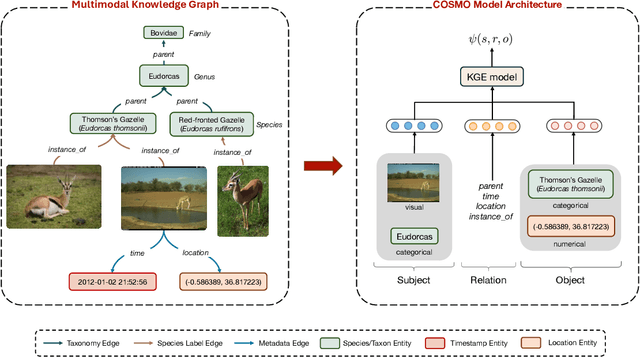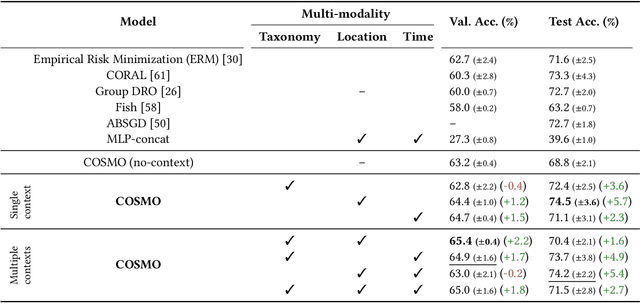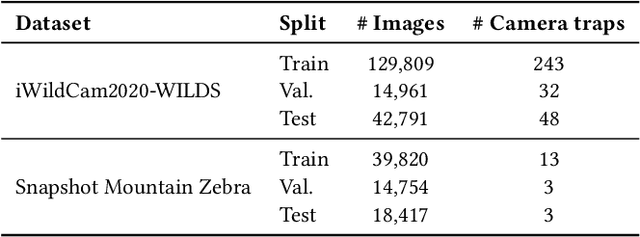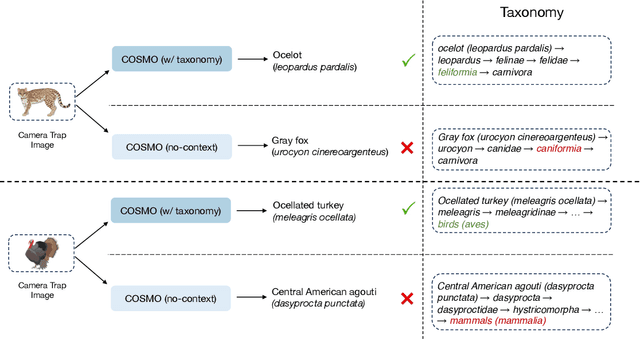Weidi Luo
Doxing via the Lens: Revealing Privacy Leakage in Image Geolocation for Agentic Multi-Modal Large Reasoning Model
Apr 29, 2025Abstract:The increasing capabilities of agentic multi-modal large reasoning models, such as ChatGPT o3, have raised critical concerns regarding privacy leakage through inadvertent image geolocation. In this paper, we conduct the first systematic and controlled study on the potential privacy risks associated with visual reasoning abilities of ChatGPT o3. We manually collect and construct a dataset comprising 50 real-world images that feature individuals alongside privacy-relevant environmental elements, capturing realistic and sensitive scenarios for analysis. Our experimental evaluation reveals that ChatGPT o3 can predict user locations with high precision, achieving street-level accuracy (within one mile) in 60% of cases. Through analysis, we identify key visual cues, including street layout and front yard design, that significantly contribute to the model inference success. Additionally, targeted occlusion experiments demonstrate that masking critical features effectively mitigates geolocation accuracy, providing insights into potential defense mechanisms. Our findings highlight an urgent need for privacy-aware development for agentic multi-modal large reasoning models, particularly in applications involving private imagery.
AGrail: A Lifelong Agent Guardrail with Effective and Adaptive Safety Detection
Feb 18, 2025Abstract:The rapid advancements in Large Language Models (LLMs) have enabled their deployment as autonomous agents for handling complex tasks in dynamic environments. These LLMs demonstrate strong problem-solving capabilities and adaptability to multifaceted scenarios. However, their use as agents also introduces significant risks, including task-specific risks, which are identified by the agent administrator based on the specific task requirements and constraints, and systemic risks, which stem from vulnerabilities in their design or interactions, potentially compromising confidentiality, integrity, or availability (CIA) of information and triggering security risks. Existing defense agencies fail to adaptively and effectively mitigate these risks. In this paper, we propose AGrail, a lifelong agent guardrail to enhance LLM agent safety, which features adaptive safety check generation, effective safety check optimization, and tool compatibility and flexibility. Extensive experiments demonstrate that AGrail not only achieves strong performance against task-specific and system risks but also exhibits transferability across different LLM agents' tasks.
Robustness-aware Automatic Prompt Optimization
Dec 24, 2024Abstract:The performance of Large Language Models (LLMs) is based on the quality of the prompts and the semantic and structural integrity information of the input data. However, current prompt generation methods primarily focus on generating prompts for clean input data, often overlooking the impact of perturbed inputs on prompt performance. To address this limitation, we propose BATprompt (By Adversarial Training prompt), a novel method for prompt generation designed to withstand input perturbations (such as typos in the input). Inspired by adversarial training techniques, BATprompt demonstrates strong performance on a variety of perturbed tasks through a two-step process: adversarial perturbation and iterative optimization on unperturbed input via LLM. Unlike conventional adversarial attack methods, BATprompt avoids reliance on real gradients or model parameters. Instead, it leverages the advanced reasoning, language understanding and self reflection capabilities of LLMs to simulate gradients, guiding the generation of adversarial perturbations and optimizing prompt performance. In our experiments, we evaluate BATprompt on multiple datasets across both language understanding and generation tasks. The results indicate that BATprompt outperforms existing prompt generation methods, delivering superior robustness and performance under diverse perturbation scenarios.
Disentangling Memory and Reasoning Ability in Large Language Models
Nov 21, 2024Abstract:Large Language Models (LLMs) have demonstrated strong performance in handling complex tasks requiring both extensive knowledge and reasoning abilities. However, the existing LLM inference pipeline operates as an opaque process without explicit separation between knowledge retrieval and reasoning steps, making the model's decision-making process unclear and disorganized. This ambiguity can lead to issues such as hallucinations and knowledge forgetting, which significantly impact the reliability of LLMs in high-stakes domains. In this paper, we propose a new inference paradigm that decomposes the complex inference process into two distinct and clear actions: (1) memory recall: which retrieves relevant knowledge, and (2) reasoning: which performs logical steps based on the recalled knowledge. To facilitate this decomposition, we introduce two special tokens memory and reason, guiding the model to distinguish between steps that require knowledge retrieval and those that involve reasoning. Our experiment results show that this decomposition not only improves model performance but also enhances the interpretability of the inference process, enabling users to identify sources of error and refine model responses effectively. The code is available at https://github.com/MingyuJ666/Disentangling-Memory-and-Reasoning.
Guide for Defense (G4D): Dynamic Guidance for Robust and Balanced Defense in Large Language Models
Oct 23, 2024Abstract:With the extensive deployment of Large Language Models (LLMs), ensuring their safety has become increasingly critical. However, existing defense methods often struggle with two key issues: (i) inadequate defense capabilities, particularly in domain-specific scenarios like chemistry, where a lack of specialized knowledge can lead to the generation of harmful responses to malicious queries. (ii) over-defensiveness, which compromises the general utility and responsiveness of LLMs. To mitigate these issues, we introduce a multi-agents-based defense framework, Guide for Defense (G4D), which leverages accurate external information to provide an unbiased summary of user intentions and analytically grounded safety response guidance. Extensive experiments on popular jailbreak attacks and benign datasets show that our G4D can enhance LLM's robustness against jailbreak attacks on general and domain-specific scenarios without compromising the model's general functionality.
Visual-RolePlay: Universal Jailbreak Attack on MultiModal Large Language Models via Role-playing Image Characte
May 25, 2024Abstract:With the advent and widespread deployment of Multimodal Large Language Models (MLLMs), ensuring their safety has become increasingly critical. To achieve this objective, it requires us to proactively discover the vulnerability of MLLMs by exploring the attack methods. Thus, structure-based jailbreak attacks, where harmful semantic content is embedded within images, have been proposed to mislead the models. However, previous structure-based jailbreak methods mainly focus on transforming the format of malicious queries, such as converting harmful content into images through typography, which lacks sufficient jailbreak effectiveness and generalizability. To address these limitations, we first introduce the concept of "Role-play" into MLLM jailbreak attacks and propose a novel and effective method called Visual Role-play (VRP). Specifically, VRP leverages Large Language Models to generate detailed descriptions of high-risk characters and create corresponding images based on the descriptions. When paired with benign role-play instruction texts, these high-risk character images effectively mislead MLLMs into generating malicious responses by enacting characters with negative attributes. We further extend our VRP method into a universal setup to demonstrate its generalizability. Extensive experiments on popular benchmarks show that VRP outperforms the strongest baseline, Query relevant and FigStep, by an average Attack Success Rate (ASR) margin of 14.3% across all models.
JailBreakV-28K: A Benchmark for Assessing the Robustness of MultiModal Large Language Models against Jailbreak Attacks
Apr 03, 2024Abstract:With the rapid advancements in Multimodal Large Language Models (MLLMs), securing these models against malicious inputs while aligning them with human values has emerged as a critical challenge. In this paper, we investigate an important and unexplored question of whether techniques that successfully jailbreak Large Language Models (LLMs) can be equally effective in jailbreaking MLLMs. To explore this issue, we introduce JailBreakV-28K, a pioneering benchmark designed to assess the transferability of LLM jailbreak techniques to MLLMs, thereby evaluating the robustness of MLLMs against diverse jailbreak attacks. Utilizing a dataset of 2, 000 malicious queries that is also proposed in this paper, we generate 20, 000 text-based jailbreak prompts using advanced jailbreak attacks on LLMs, alongside 8, 000 image-based jailbreak inputs from recent MLLMs jailbreak attacks, our comprehensive dataset includes 28, 000 test cases across a spectrum of adversarial scenarios. Our evaluation of 10 open-source MLLMs reveals a notably high Attack Success Rate (ASR) for attacks transferred from LLMs, highlighting a critical vulnerability in MLLMs that stems from their text-processing capabilities. Our findings underscore the urgent need for future research to address alignment vulnerabilities in MLLMs from both textual and visual inputs.
Bringing Back the Context: Camera Trap Species Identification as Link Prediction on Multimodal Knowledge Graphs
Jan 08, 2024



Abstract:Camera traps are valuable tools in animal ecology for biodiversity monitoring and conservation. However, challenges like poor generalization to deployment at new unseen locations limit their practical application. Images are naturally associated with heterogeneous forms of context possibly in different modalities. In this work, we leverage the structured context associated with the camera trap images to improve out-of-distribution generalization for the task of species identification in camera traps. For example, a photo of a wild animal may be associated with information about where and when it was taken, as well as structured biology knowledge about the animal species. While typically overlooked by existing work, bringing back such context offers several potential benefits for better image understanding, such as addressing data scarcity and enhancing generalization. However, effectively integrating such heterogeneous context into the visual domain is a challenging problem. To address this, we propose a novel framework that reformulates species classification as link prediction in a multimodal knowledge graph (KG). This framework seamlessly integrates various forms of multimodal context for visual recognition. We apply this framework for out-of-distribution species classification on the iWildCam2020-WILDS and Snapshot Mountain Zebra datasets and achieve competitive performance with state-of-the-art approaches. Furthermore, our framework successfully incorporates biological taxonomy for improved generalization and enhances sample efficiency for recognizing under-represented species.
 Add to Chrome
Add to Chrome Add to Firefox
Add to Firefox Add to Edge
Add to Edge